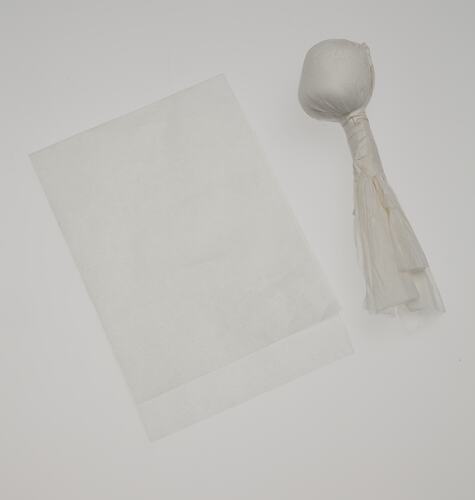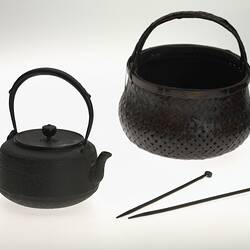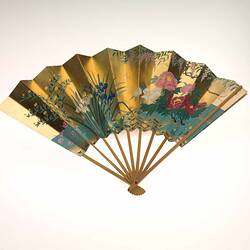Summary
Part 5 of 16 in the process of making a Japanese Shimotsuke paper doll. It was created by Masumi Hiraga Jackson in 2010 to demonstrate and document the process, step by step, of making a Shimotsuke doll.
Paper doll-making in its simplest form dates back over a thousand years in Japan. They were first produced as a cleansing process made to remove bad aura away from people. By the 8th century, a unique method of crepe paper production was introduced to the Shimotsuke region. The technique has been refined over time, using flexible crepe paper which is easily moulded into various shapes. The colours and patterns hand-dyed on the paper reflect kimono designs, while the characters are taken from Japanese folk stories and Noh theatre. Shimotsuke-paper doll making requires delicate and refined work. The body of a doll is made from paper and cotton, and then it is dressed with many layers of individually prepared paper kimono and pasted together with glue. Shimotske is a hard wearing fibrous paper hand-rolled and dyed by a family business in Japan (the sole supplier of this paper in Japan) from whom Masumi directly orders the paper. Her dolls have been displayed at the National Gallery of Victoria, the Geelong Arts Centre, Victoria and Japanese Consulate in Melbourne.
Physical Description
Part 5 of a series of 16 steps in making a Shimotsuke doll. Part five is comprised of two pieces of white tissue paper in the plastic bag in which it is contained and numbered, in accordance with the sequence of production. One piece covers a rolled piece of tissue to form the beginning of the head of a doll.
More Information
-
Collection Names
-
Collecting Areas
-
Acquisition Information
Donation from Mrs Masumi Hiraga, Dec 2009
-
Creator
Mrs Masumi Hiraga, Glen Iris, Greater Melbourne, Victoria, Australia, 2010
-
Inscriptions
Handwritten on label on bag: 5
-
Classification
Cultural identity, Ethnicity - creative practice, Paper craft
-
Category
-
Discipline
-
Type of item
-
overall dimensions
15 cm (Length), 9 cm (Width), 3.5 cm (Depth)
-
Keywords
Crafts, Japanese Communities, Japanese Culture, Japanese Immigration, Paper Craft


